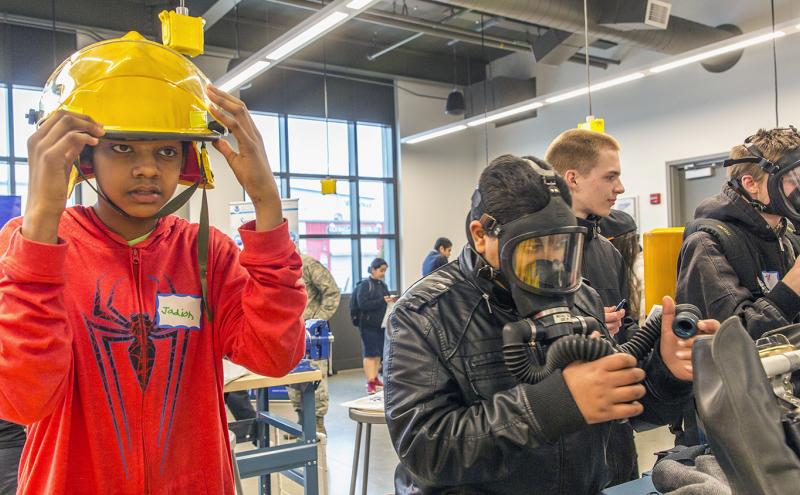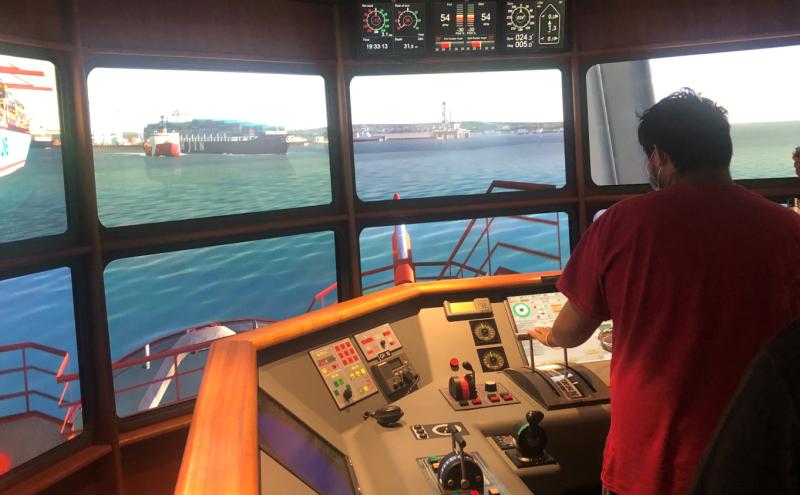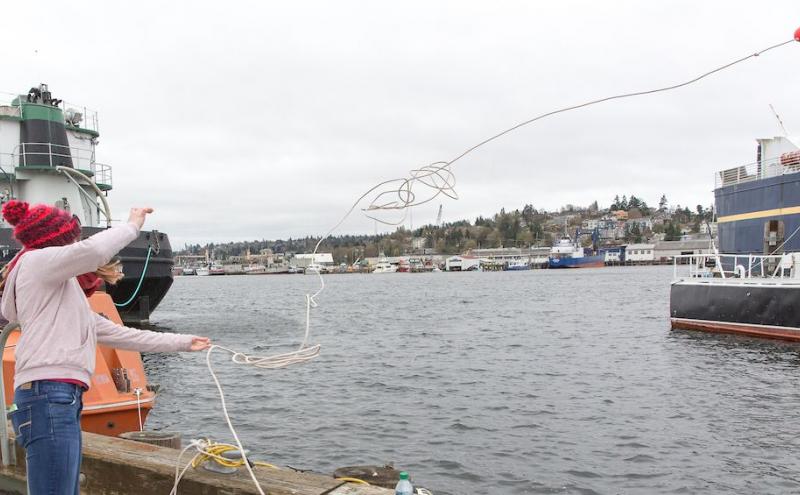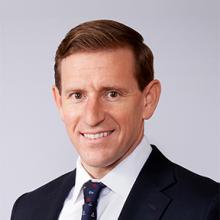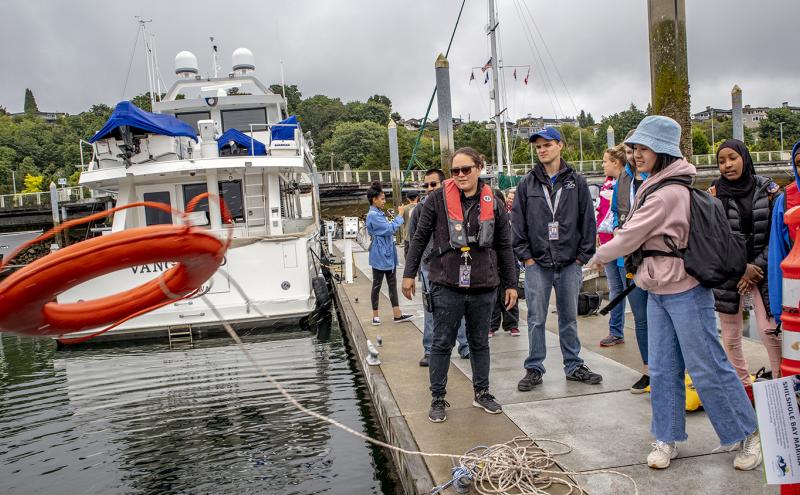
Editor's Note: This training program is designed as a career launch; youth are recruited by community-based organizations to receive training based on core competencies identified by maritime industry employers. The youth will receive some months of training from a community-based organization. The last phase of their training program is to be placed in an internship with maritime employers for a three-month entry-level paid internship position.
We believe an important part of our equity work is to provide paid internships for young people in programs. The Port will pay part of the interns' stipend during their internship at the company, and ask maritime employers to consider hiring their interns for a full-time, entry-level position at the conclusion of the internship.
This piece ran as a Special in the Seattle Times on April 26, 2022, at 4:11 pm
By Ryan Calkins and Hamdi Mohamed
In April of 2020, we faced the most sudden, catastrophic loss of jobs since the Great Depression. COVID-19 decimated employment, especially in hospitality, tourism, and other service-related industries that were shuttered as we all sheltered in place.
Now, two years later, we find ourselves — surprisingly — with exactly the opposite problem. The unemployment rate is lower than it’s been in two generations, and employers in every industry are struggling to find workers. This should be obvious both locally and outside our region if you tried to take a ferry or board a plane recently.
At the Port of Seattle, this whipsaw in the labor market has caused us to consider how we can smooth out the peaks and valleys, creating more stable employment for workers and less attrition for employers — in good times and in bad. One clear insight we’ve learned is that, in both cases, youth workers should be treated as integral to our economy rather than a discretionary and occasional workforce.
And that is the silver lining that has come with the labor shortage, along with the “gray wave” of current retirements: It opens a pathway for young people — especially those from underrepresented communities — into well-paying, career opportunities that are available throughout this region.
But hiring young people can be hard. School schedules, transportation challenges, and more intensive onboarding requirements add complexity. So, it’s understandable why some companies decide that recruiting a youth workforce is too burdensome.
We do not have this luxury at the Port of Seattle. We need a constant pipeline of skilled workers for our maritime and aviation divisions. We also plan to spend billions of dollars over the next decade in green construction projects at our facilities, requiring thousands of trades workers. We believe that our future workforce should reflect our community, which means that job sites will need to include many more women and many more people of color.
Additionally, we have made three pivotal changes to our jobs programs that accelerated our efforts to build a more diverse workforce. First, we changed our summer internship program into a year-round internship, making interns a critical part of how the port does its regular business. Next, we built upon a successful collaboration with local nonprofits, meeting with them regularly to recruit youth and support their success. Finally, we embraced a project-based, cohort model, making virtual work more engaging for youth.
Those programs represent a chance for young people to step onto the lowest rung of the career ladder into our industries, which is a great start. But without a permanent job to climb into after those first steps, our efforts will have been in vain.
This year the commission will launch a new program to focus on those permanent jobs. Based on our highly successful Opportunity Youth Initiative, our new Youth Career Launch program ultimately aims to place youth into jobs that will lead to careers in maritime. We’ve committed more than $4 million for this program over the next three years.
We chose to focus on maritime for good reason. Nearly 70,000 Washingtonians work in the maritime industry, but, as The Seattle Times recently reported, the maritime workforce is aging and retiring, and doesn’t reflect the diversity in our communities. A new generation of workers isn’t coming into the industry at the same pace. Our experiment in engaging young people early on has already paid dividends for the port. We hope that other major employers will create those early opportunities — the lowest rungs on the career ladder — within their own organizations.
Here’s what we propose for maritime companies: Host youth interns for three months. The Port will pay the interns for their time and work at your company. In return, we ask that you consider hiring them for a full-time, entry-level position at your company at the conclusion of their internship.
Today’s labor crunch is a good reminder for business leaders that talent development doesn’t start after you’ve sent an offer letter. It begins by engaging with young people through the career development programs that funnel into our industries. Smart leaders will invest in those pipelines.
Whether you are a maritime leader ready to participate in our career launch program, or a local business interested in rethinking how you manage your own youth jobs, the last two years should be the wake-up call we need. The time is now to begin preparing for the next economic crisis. Investing in youth career development is one sure way to weather the next storm.
Ryan Calkins is a Port of Seattle commissioner and the executive director of the Edge Cluster, a nonprofit dedicated to statewide economic development through emerging technologies.
Hamdi Mohamed is a Port of Seattle commissioner and director of the Seattle Office of Immigrant and Refugee Affairs.

